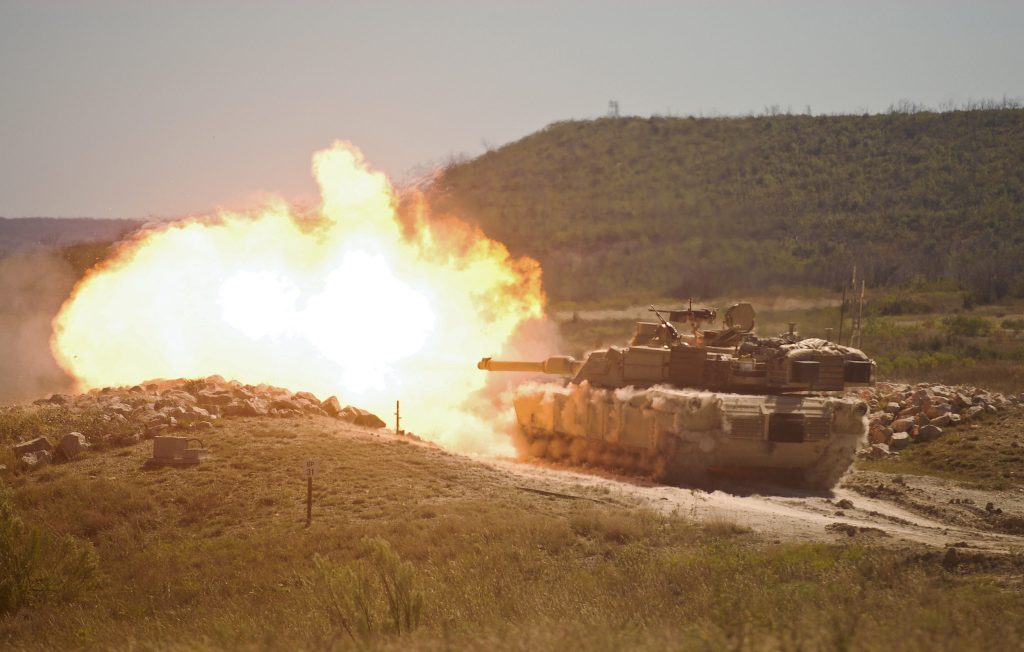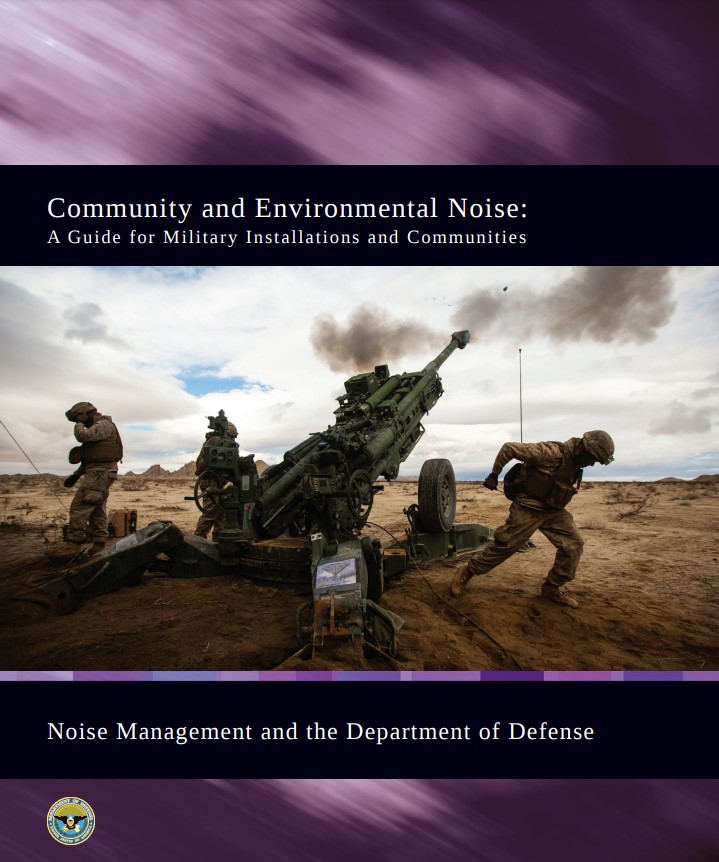Introduction
Population growth and urbanization trends have resulted in communities that are closer to military installations, airfields, and ranges. As a result, DoD is now competing for use of airspace, land, and seaspace previously dedicated to military activities. While nearby incompatible development poses a variety of issues for the military, noise is one of the most problematic byproducts of military training for communities. Noise is defined as unwanted sound that disturbs routine daily activities and may be an annoyance. Planes, helicopters, artillery, tanks, and small arms are standard equipment for the military. The sound this equipment generates during testing and training activities often reaches neighboring communities, sometimes rattling windows, disturbing sleep, and affecting people’s daily lives.
Communities and the military must consider how changes to both community development and military operations can impact community exposure to military noise. Communities near installations and ranges must consider military noise as they grow and change. Failure to consider noise in community plans can lead to greater community exposure and impacts to the military mission in response to complaints. Changes to military operations such as realignment of military units, use of new tactics and weapons, and increases or changes in night operations can also lead to increased noise exposure if DoD does not consider current and future community plans. Two-way communication and collaborative planning between the military and its neighboring communities can reduce community noise exposure while protecting the military mission and prevent future challenges with noise.
The Military Services’ Perspective
Success on the battlefield depends on realistic training that produces skilled warfighters who have confidence in themselves, each other, and their equipment. To prepare Soldiers, Sailors, Marines, and Airmen for combat, the Military Services need to conduct high-quality testing and training throughout the year. Negative community reactions to military noise are often a challenge to this essential training. As a result, the Military Services focus a significant amount of time and resources on studying, communicating, and addressing noise generated by military activities to protect essential testing and training.

Public and political pressure, legal action, and damage claims against military installations have had significant consequences for military operations. For example, the Army Assistant Chief of Staff for Installation Management determined noise impacts the ability to conduct training and other mission activities at 49% of active Army installations.
Unresolved noise problems can result in restrictions on military activities that impact effectiveness and realism, including:
- reduction in available flight/training hours (e.g., limited or no night training, seasonal delays for training, modification of military training routes);
- restrictions or curtailment of airfield operations;
- higher altitudes for flight operations; and
- relocation or closing of firing points and ranges.
The Community Perspective
While the sound of military activities evoke thoughts of safety and national security in some people, others find these sounds a nuisance. People can be startled by unexpected military sounds and may not understand why such noise is necessary. Communities often question the need for night training or even any live-fire training at all.
The number of people expected to be “highly annoyed” by noise is a metric used by the DoD and federal agencies to identify and address long-term noise exposure, noise impacts, and land use compatibility recommendations.
Annoyance is largely subjective. In a modern environment of constant natural and manmade sounds, an individual’s response to military sound sources and perception of noise will vary depending on many factors. However, annoyance levels can be quantified and qualified. Recent studies and community surveys suggest a growing public intolerance for noise associated with military activities, expressing concerns about:
- interruption at work and school;
- diminished privacy and quiet at home;
- interrupted entertainment and conversation;
- sleep disturbance;
- property damage including broken windows; and
- disturbance of wildlife, livestock, and pets.
The individual response of a community member to noise depends on many noise factors:
- intensity, or loudness of the sound;
- duration, or length of time they can detect the sound;
- frequency, or pitch of the sound;
- repetition of the sound source;
- time of day the sound occurs;
- abruptness of onset or cessation of the sound;
- fear of personal danger from the sound sources; and
- the extent to which people believe that DoD can control the noise.
Finding Common Ground
Efforts to manage and mitigate noise, both on and off an installation, help reduce community exposure to noise while protecting the military mission. This Primer addresses the many ways DoD works with communities to find common ground and protect communities from noise exposure.
There are many opportunities for military installations and neighboring communities to reach mutually beneficial solutions to address noise-related concerns. Service- and Installation-specific noise management programs help installations work with their neighbors to address the impacts of military noise. Cooperative problem solving improves the likelihood of successful noise management.
Education and outreach are the first step in developing cooperative relationships between installations and communities. Informed communities are often the most engaged. It is very important for communities to understand the noise challenge, how to communicate with the installation, and participate in community and installation planning efforts. Establishing and maintaining a connection between installation and community is essential.
Planning and prevention can go a long way to achieving success and mutual benefit for the military and surrounding communities. Military activities and community development are in a constant state of change. For the military, noise management is always a part of the planning process. As close neighbors, coordinating planning activities and identifying compatible land uses can minimize or eliminate unnecessary community noise exposure.
Adequate mechanisms for responding to and mitigating noise exposure are also important components to any noise management program, especially for communities already exposed to or impacted by military noise. Complaint management systems and procedures help address community concerns while also allowing the installation to identify the source and determine whether adjusting testing and training operations to minimize or prevent further impact.
How does the DOD quantify noise and predict annoyance?
While it is difficult to directly measure annoyance, studies have found that sound levels can help to predict how communities will react to different noises. Decades of community surveys and scientific studies have produced and validated an internationally recognized relationship between transportation sound levels and community annoyance. This relationship is used to develop land use recommendations for all federal, state, and local agencies. DoD also applies this relationship to noise generated by military activities. DoD and communities use these land use recommendations as part of their decision-making.
What is the DoD doing to reduce annoyance?
Community and environmental noise management programs are specifically designed to help military installations work with their civilian neighbors to address the impacts of military noise. These programs guide noise management efforts both on and off a base/installation and often include the following elements:
- noise assessment;
- noise education;
- complaint management;
- noise mitigation; and
- vibration information

